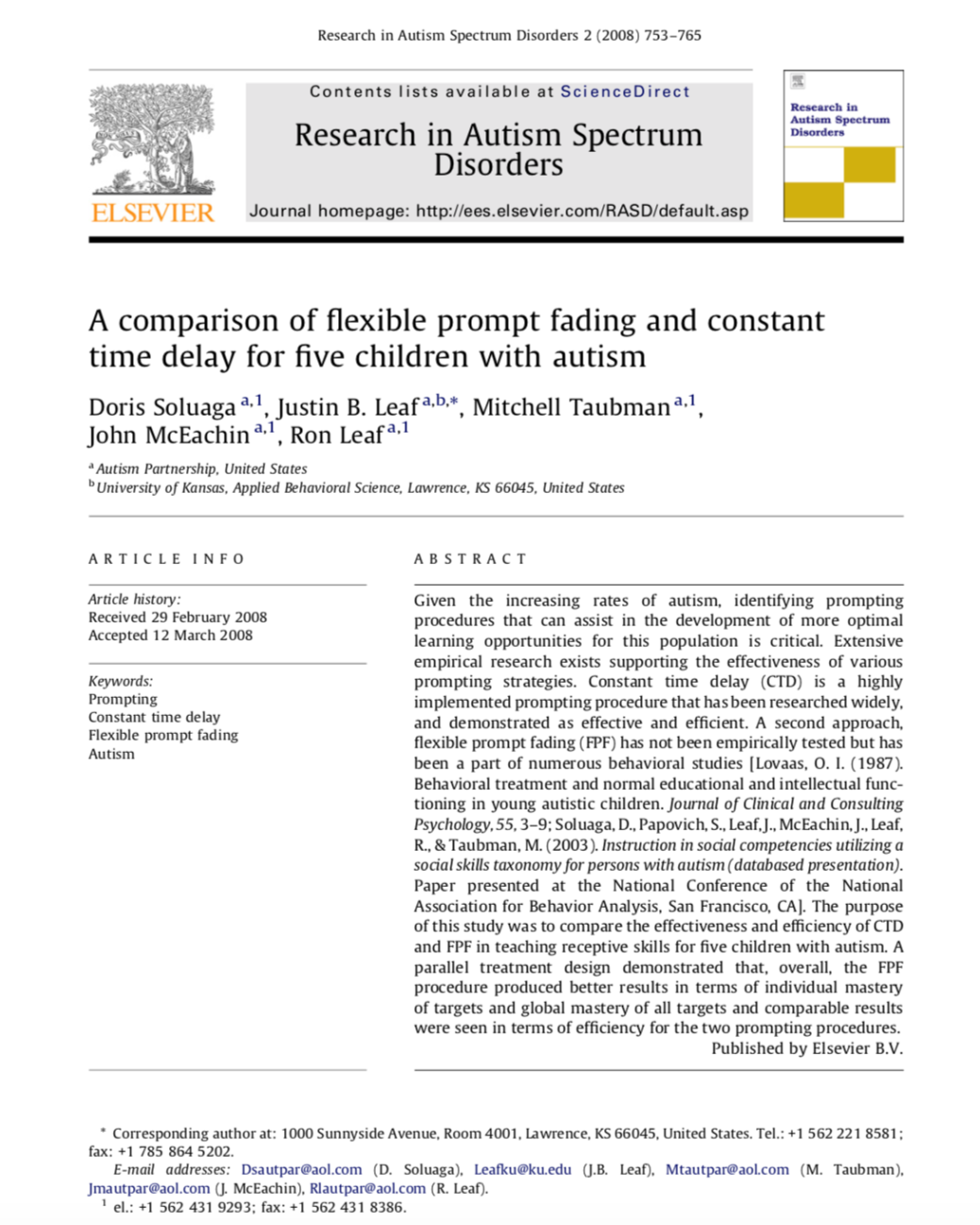Due to the importance of prompting in autism spectrum disorder (ASD) interventions, many prompting systems have been developed. Many of these systems involve rigid rules for when and how to prompt. For instance, constant time delay involves providing a prompt after a specified time (e.g., 5 seconds). Within the Autism Partnership Method, interventionists are given the flexibility to assess in-the-moment and use clinical judgement to determine if a prompt should be provided, what type of prompt to provide, and how to fade the prompts. This system is called flexible prompt fading. This study compared constant time delay prompting to flexible prompt fading to teach receptive labels to children diagnosed with ASD. Results demonstrated that flexible prompt fading was just as effective and efficient as constant time delay prompting.

